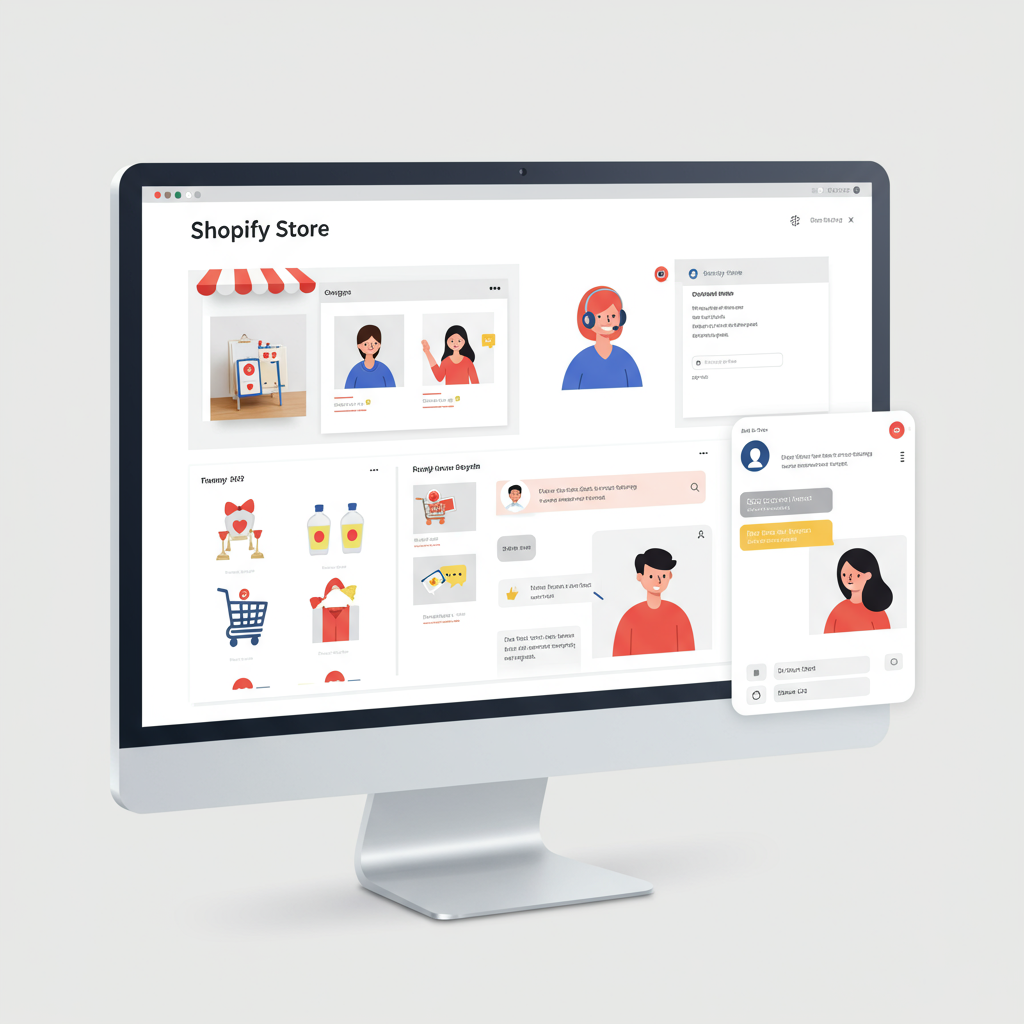Discover how to integrate live chat, boost customer satisfaction, and drive sales on your Shopify e-commerce platform.
As a Shopify merchant, I’ve learned that customer service isn’t just a department; it’s the heartbeat of a successful online store. In today’s fast-paced digital world, customers expect instant gratification and immediate answers to their questions.
This is precisely where live chat support steps in as an indispensable tool. It allows you to connect with your customers in real-time, offering immediate assistance and building trust.
From my own experience, implementing live chat has been a game-changer. It transforms a potentially frustrating customer journey into a smooth, supportive interaction, often leading directly to a sale.
One of the most significant benefits I’ve observed is the ability to provide instant support. Customers no longer have to wait for email replies or navigate complex phone menus. Their queries are addressed on the spot.
This immediacy directly translates into increased conversion rates. Imagine a customer on the fence about a purchase; a quick chat can resolve their doubts and push them towards completing the order.
Live chat also plays a crucial role in reducing cart abandonment. If a customer encounters an issue during checkout, a timely chat intervention can save the sale that might otherwise have been lost.
Beyond sales, it fosters a sense of trust and reliability. When customers know they can easily reach out and get help, their confidence in your brand grows exponentially.
For Shopify merchants like us, there are several excellent options for integrating live chat. These range from dedicated Shopify apps to more robust third-party services and even Shopify’s own native solution.
My personal recommendation for most Shopify store owners, especially those just starting with live chat, is to utilize an app from the Shopify App Store. They are designed for seamless integration and ease of use.
To find the right app, I usually start by navigating to the ‘Apps’ section in my Shopify admin and then clicking ‘Visit the Shopify App Store.’
Once there, I search for ‘live chat’ or ‘customer support.’ I pay close attention to app features, customer reviews, pricing models (free, subscription, or pay-per-use), and how well they integrate with other tools I use.
After selecting an app that fits my needs, the installation process is incredibly straightforward. I simply click the ‘Add app’ button on the app’s listing page.
Shopify will then prompt me to review and approve the permissions the app requires to function correctly on my store. I always make sure to read these carefully before proceeding.
Once installed, the app typically guides me through its initial setup. This usually involves customizing the chat widget’s appearance to match my store’s branding – things like color, position, and icon.
I also make sure to set up a compelling welcome message. This is the first thing customers see, so I try to make it friendly and inviting, perhaps offering to help with common questions.
Configuring operating hours is another vital step. I define when my team or I will be available to chat live, and what message customers see when we’re offline (e.g., a contact form or an estimated response time).
Many live chat apps also offer integrations with other tools like email marketing platforms or CRM systems, which I find incredibly useful for a holistic customer view.
Another option, which I’ve explored, is Shopify Inbox. This is Shopify’s native chat solution, built directly into the platform. It’s a great starting point for basic chat functionality.
To enable Shopify Inbox, I simply go to ‘Settings’ in my Shopify admin, then ‘Inbox.’ It’s usually a matter of toggling it on and doing some basic setup.
Shopify Inbox allows me to manage customer conversations directly from my Shopify admin or the Shopify Inbox mobile app. It’s convenient for quick replies and managing simple inquiries.
For merchants with more complex needs or higher chat volumes, integrating a dedicated third-party live chat service like Zendesk Chat or Intercom might be a better fit. These often offer more advanced features.
Integrating these services usually involves copying a snippet of code from their platform and pasting it into my Shopify theme’s `theme.liquid` file, typically just before the closing “ tag.
Regardless of the solution I choose, I always adhere to a few best practices. First, I ensure my team is well-trained on how to use the chat software and, more importantly, how to provide excellent customer service.
I also set clear expectations for response times. If I can’t respond instantly, I let customers know when they can expect a reply, managing their expectations effectively.
Proactive chat is something I’ve experimented with – initiating a chat with a customer who seems to be lingering on a product page or struggling with checkout. It can be incredibly effective.
Using canned responses for frequently asked questions saves a lot of time and ensures consistency in my replies. I build a library of these for common inquiries.
Regularly analyzing chat data, such as chat volume, response times, and customer satisfaction ratings, helps me identify areas for improvement and optimize my support strategy.
Finally, I always ensure my chat widget is mobile-responsive. Most of my customers browse on their phones, so a seamless mobile chat experience is non-negotiable.
Implementing live chat has truly transformed how I interact with my customers and has positively impacted my store’s performance. It’s an investment that pays dividends in customer loyalty and sales.
I encourage you to explore the options and find the live chat solution that best fits your Shopify store’s unique needs and customer base.
What do you think about this article? I’d love to hear your thoughts on implementing live chat for your own store!
By providing immediate, personalized support, you’re not just answering questions; you’re building relationships and fostering a thriving e-commerce business.






